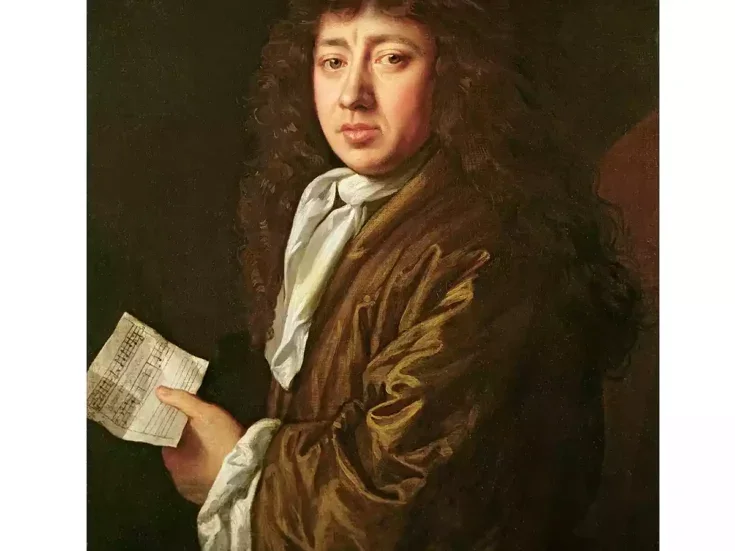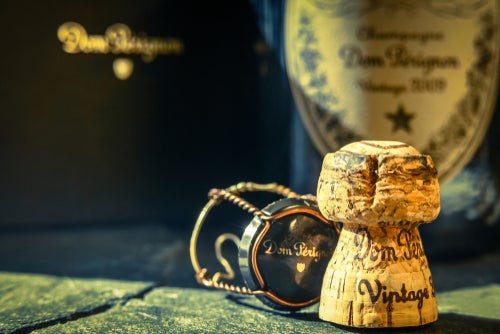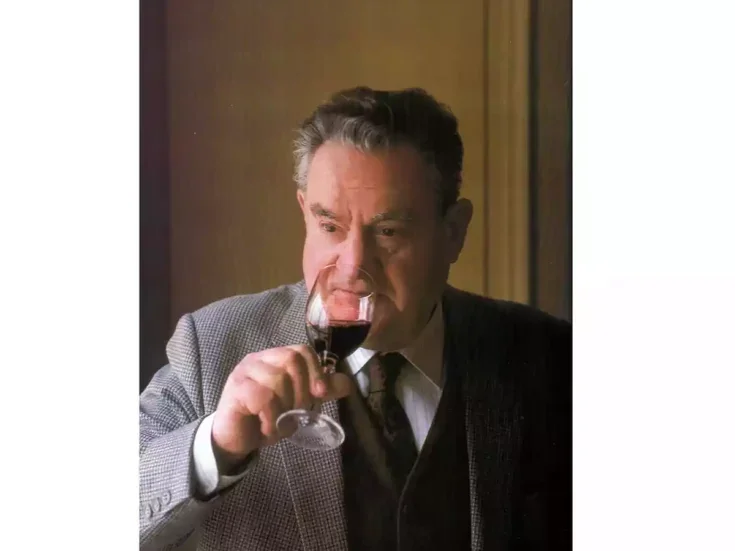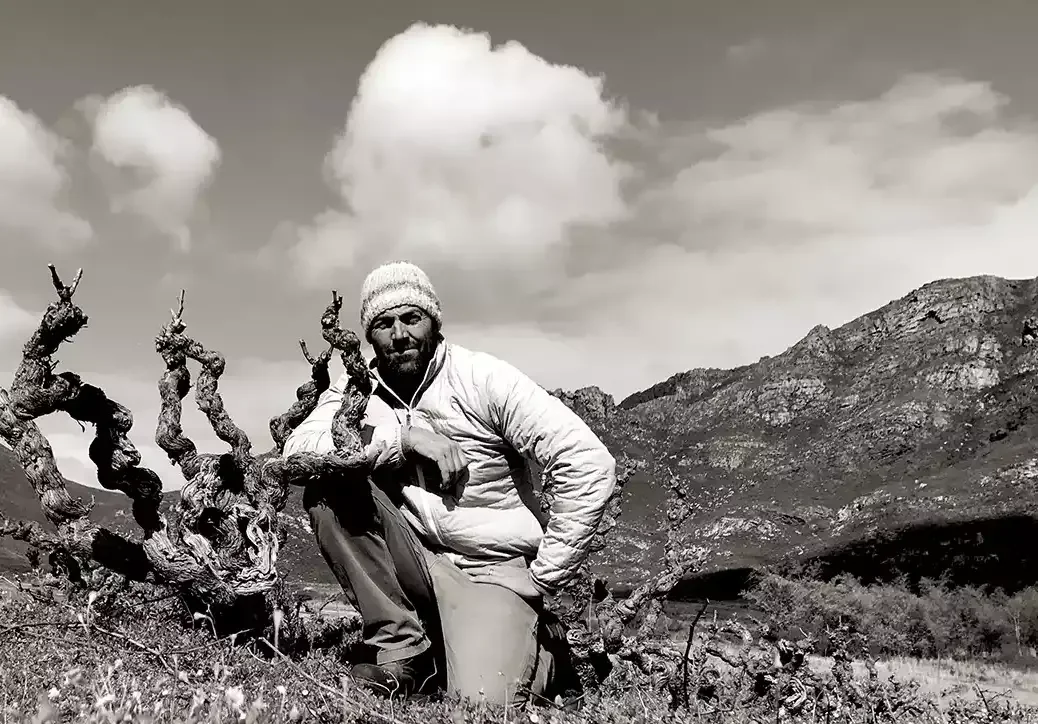
In the second of a series of extended interviews with leading wine growers marking 20 years of The World of Fine Wine, South Africa’s Eben Sadie tells David Williams about his past two decades of wine growing.
Vignerons’ stories: Katharina Prüm
Vignerons’ stories: Jean-Baptiste Lécaillon
Vignerons’stories: Véronique Sanders
Vignerons’ stories: Telmo Rodriguez
Vignerons’ stories: Francisco Baettig
Vignerons’ stories: Diana Snowden Seysses
Vignerons’ stories: Brian Croser
The story of South African old vines
Eben Sadie: What happened in South Africa with old vines—it’s a deal thing. Because of Apartheid, because of our isolation, for a long time, our industry was locked into a slumber mode, somewhere between a form of hibernation and being on standby. When you’re in that mode as a country and an economy, you buckle down and ride out the storm. You try to save money, and not do things. At that time, not many vineyards were planted. But Australia was coming on point strongly, and California—after the Judgement of Paris, there was a rise in the perception of what American wine was. California was pumping, Cloudy Bay was pumping, all these New World countries were pumping.
But there was nothing here, as there was no way here. We couldn’t export, we had a diminished national market dominated by big co-operatives. There was no incentive for new varieties or vineyards, thanks to poverty, lack of vision, slumbering. And so, a lot of old vineyards didn’t get pulled up, and that was down to an absence of progressive thinking. But, you know, sometimes the worst thing that can happen to an old building is when an ambitious person comes and buys it and ruins it without understanding it.
By 2005, I was already invested in Europe, and I’d just started to become very aware of the big correlation between old vines and quality inside places like Vega Sicilia, Alvaro Palacios, Comte de Vogüé, Armand Rousseau… Whatever the fine-wine producer, there was a big proportion of old vines going into their reserve wines. Going back to a South Africa that was just coming back into the limelight, I saw vines being ripped up and replaced with Cabernet or Merlot or whatever other trendy, productive variety, without any foresight. I met Rosa Kruger at the time, and we sat and discussed it, and we decided we had to do something. And so we just basically started a number of campaigns.
Johann Rupert very soon latched onto it. The Rupert family has always been into conservation and art history, and they put a lot of money forward for all that. And so, the Old Vine Project was born, and it got even more profile and trajectory.
Parallel to all of that, on our small domaine here, in the first ten years, Columella and Palladius were made from old and young vineyards—either very new or very historic, but blended. By 2009, I thought I’d learned so much from the old vineyards in South Africa, I started making experimental wines from old vineyards. I wanted to understand the mystique and the majesty of these old vineyards. And then, in 2009, I released this thing called the Old Vine Series, with some of the most iconic vineyards bottled as monopoles. It became a global thing, and I had huge global support for the project. It wasn’t so much a marketing thing, but a completely new, fresh level of quality and a whole new type of wine in South Africa, and a lot of people latched onto that, supporting us and following us with this journey. As awareness grew, we could invest massively in our old vineyards, and that became a very big success story.
Place above progress
Eben Sadie: I like history and tradition, but you have to know what to preserve and what to keep. Progress is very important—we can’t stay in the cave. But we also ruin a lot of things in the wake of progress. One of our barometers is place above progress, which means you need to be acutely aware of progress, but if it completely alters things and comes at the cost of the place, it’s not worth it.
The vinification of the Old Vine Series wines is the 1950 formula—textbook… mid-century. It’s just destemmig, one pump over a day, basket press, and then just left in the tonneau, with all indigenous yeast. Winemaking 101, without being clever about it—every red wine and white wine in the same way. If you want to understand what you’re doing, you have to have a constant to read the differentials in terroir—that’s why we have a very fixed winemaking regimen.
In South Africa, the idea of an old vineyard has suddenly taken off, single-old-vineyard bottlings have taken off, and we’ve managed to save grapes that would have been extinct in South Africa, such as old-vine Cinsault and Tinta Barocca. The bigger thing now, the more recent communication, is how you plant a vineyard to get old.
Just because you’ve planted a vineyard, that doesn’t mean it’s going to get old. With commercial vineyards, everything is done on the cheap, and most vineyards won’t get to 20 years of age. What do you need to do to make it reach 100 years, or 150 years? I’m not talking about hanging on, I’m talking about being prolific at that age. You need to be planting top plant material, you need to think about how carbon is managed in the soils, your cover-crop materials, your grafting materials, your trellising system, the architecture of the vine… the whole thing.
We’ve been raising a lot of awareness of old vineyards. But if you start lapping up old vineyards, but not planting new ones, then you’re not part of a sustainable system. With old vineyards, people naturally look back—but if you’re really serious, you have to look forward. Old vines—and the care of existing vineyards. We’re trying to get that thought pattern. I mean, every guy with a cute little t-shirt and ripped jeans is coming out with an old-vine Chenin with a groovy label. That’s important, it’s cool, but what are you doing for the next generation? How do we make this into a legacy?
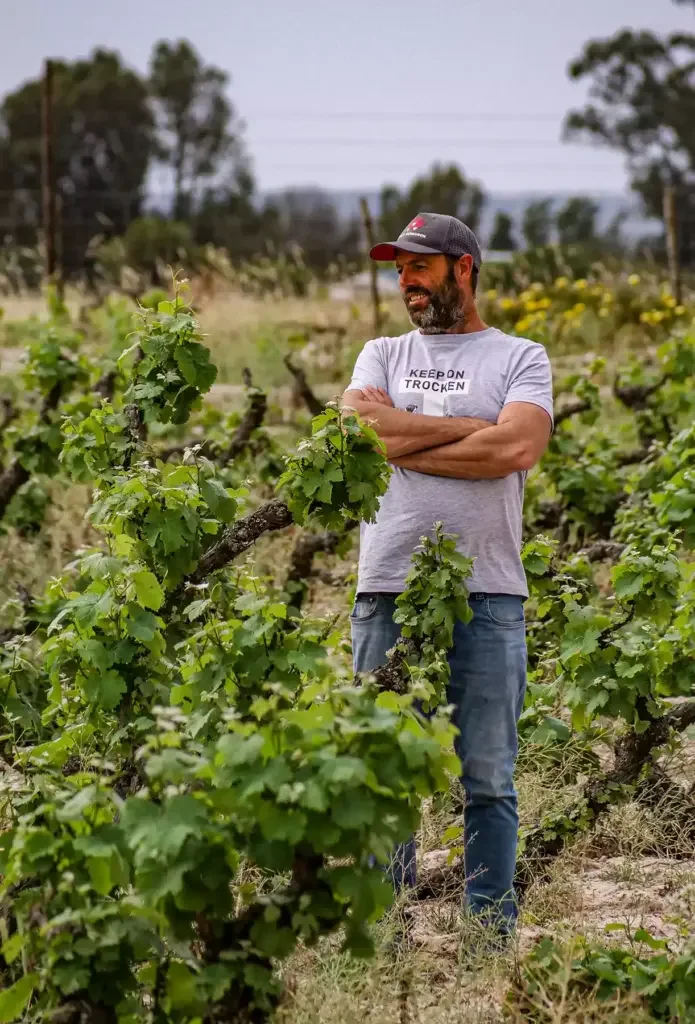
The power of young vines
Eben Sadie: The other illusion out there is that you can only make super-premium wine from old-vine vineyards. That’s not true—although it is much easier.
A young vine is a big, powerful thing like a youthful person—it grows, it’s vigorous, it looks like a grown-up. It has a big canopy, but it has very limited roots; your above-the-ground vineyard is always in excess of your root development. It’s much easier to grow aerial than into the ground. With a young vine, for at least 20 years, that vigor is exponentially bigger than the roots.
If you can adjust the vigor of your young vine through the season, you can do something. It’s very difficult. An old vineyard is much easier. It has an established root system, it’s rejuvenating every year, it’s a very stable system
The thing with old vineyards is that the young vine requires an incredible take on viticulture. If you look at David Abreu, the guy who did all the vineyards for Screaming Eagle and Colgin… there are guys who are able to do these kinds of vineyard management aspects, but not all companies can do it. Old vines are much more relaxing—they have adopted all the available networks and space. But young vines—with a diminished root system, respirating too much with a vigorous canopy, and with all these inner stress patterns occurring—they suffer a loss of acidity, all the cycles go out of sync. And that just generally happens to a much greater extent, unless you have a farmer completely on top of everything every week.
Climate preparedness—and complacency
Eben Sadie: I’ve spent the past 25 years on R&D, creating the most robust system for climate change and being overprepared. And I’m gobsmacked, when I travel to the traditional regions, to see how little they’ve done… and sometimes I replace the word “little” with “nothing”!
If you’re getting $300 a bottle without sweating too much, you’re more likely to be sweating about your ski holiday or Rolex than climate change. I get to very prolific wineries that are world-famous and I say, “What are you doing about how your wine is now 15.5% ABV? I’ve been a collector of your wines for 25 years… What are you doing about it?” And the thing is, there is still someone—in Asia, most likely—willing to buy it. But for how much longer?
If Pinot Noir in Burgundy is now at 15% ABV, and you’re not worried, when will you be? At 16%? 17%? In Barolo and Barbaresco, if 15.5% isn’t an issue here, is 16.5%? When do we say, we’ve got a problem? It’s mind-boggling how complacent people are—they are not even thinking about what radical change could be.
In terms of what we’re doing: I started in 2001 an R&D program, to start working with a plant-improvement scheme in South Africa, with the government and ourselves, to try to bring here all the grapes in the world and start studying them. I love maths, science, and engineering. I like design, troubleshooting, and algorithms. Let’s look at the latitude, temperature, soil, to compute where in the world is climatically similar, and which are drier and warmer than us, and what are they growing, and if [those varieties] get here, in which parts of the country should they be going.
The first thing we should understand is that vines are either isohydric or anisohydric. With isohydric, water management is better managed in terms of a vine’s ability to shut down and weather extreme heat. The good varieties are Grenache, Carignan, and Assyrtiko. The bad ones are anisohydric: Merlot, Sauvignon, Pinot. A lot of the most popular grape varieties are anisohydric, and are the worst-adapted to climate change.
We’re looking at our acidity and our freshness points. We’re getting ready. We are ready for the change. Most other producers don’t know what we’re talking about. I’m a geek, I’m weird… Fine, but there’s nothing geeky about Syrah in the Swartland, which you can’t pick at an acidity of more than four [grams per liter]. You can add three grams of acid—but is it then linked to this place, to the terroir?
It’s all about the robustness of potential varieties in a site, and that’s where places like Burgundy are going to have it very hard. If you don’t plant Pinot in Burgundy, the whole story is kaput; but I’m in an area where if I don’t plant Syrah, but I plant Alicante Bouschet, we just move on. Our legacy is not going to be our Achilles’ heel.
I think Bordeaux is one of the few places that has taken a good measureby planting Touriga Nacional. It’s not cool for the hipsters, but at least they’re getting on with it. All these other little hipster regions are doing nothing. I have huge respect for Bordeaux, and by planting Portuguese varieties, they will have a buffer for a while. Some of the traditional areas, like the Mosel, Barolo, and Barbresco, don’t have much of a buffer—these cool-climate places don’t have the systems in place.
The second thing is we’ve changed our viticulture. We have more soil space per vine. We have lower densities. If you go into a financial crisis, you want a financial reserve; the vine’s reserve needs to be big—it needs a lot of stored starch. You need to get more carbon in your soil, you need to farm your cover crops, you need to mow them flat. You need to change your canopy management to have more shade in it. Then there’s your shoot-positioning… All of that stuff helps you adjust to climate change. The difference is, there are not as many watering stations on the marathon… So, what must the athlete’s training look like?
I’m very worried—not because I want to worry, I also want to relax. But the most dangerous thing in the world is not to know what season you’re living in. I’m a legacy person. I’m not just interested in my career—I worry about this place when I’m dead. I’m thinking about my sons and about my daughter—both sons have studied viticulture and enology, and they’re going to come back here at some point. They have to carry on with the R&D. We want to make wine for a long time—and not just for the sake of it or to just hang in there. We want to calculatedly find a way that we can take this domaine into the future and keep the amazing work we’ve done afloat… and improve… and make better wines.

